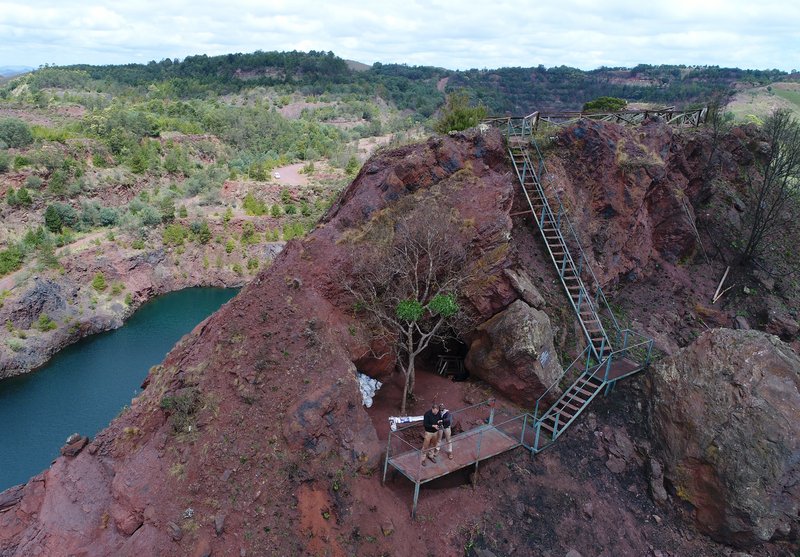Lion Cavern Ngwenya – The Oldest Ochre Mine in the World

Prehistoric hunting scenes in the caves of Lascaux in France, ceremonies, and body paintings of indigenous people worldwide, and medieval artworks – ochre, a naturally occurring, lightfast earth mineral, has long been used by humans as a pigment, sunblock, adhesive additive, and for medicinal and ritual purposes. Published in Nature Communications, this study focuses for the first time on the role and regional distribution of ochre in southern Africa.
Based on 173 samples from fifteen Stone Age sites, the international research team, led by the German Archaeological Institute (DAI) and the Senckenberg Centre for Human Evolution and Palaeoenvironment (HEP) in Tübingen, was able to reconstruct regional networks for ochre extraction, transport, and use. Cultural practices did not develop in isolation but were part of an extensive network shaped by exchange, seasonal migrations, and symbolic communication. The study’s findings point to the intergenerational transmission of knowledge about ochre – a tradition that lives on in Eswatini today, notably in wedding ceremonies. New dating methods, using optically stimulated luminescence, further confirm the ancient age of Lion Cavern in Eswatini, highlighting its significance as the world’s oldest known site of intensive, continuous ochre extraction.
“The groundbreaking results are the outcome of a long-term development cooperation between the German Archaeological Institute and local partners, including the Eswatini National Trust Commission (ENTC) and the University of Eswatini (UNESWA), with the aim of involving young researchers in international top-tier research and strengthening the protection of national cultural heritage on-site,” explains Jörg Linstädter, Senior Director of the Commission for Archaeology of Non-European Cultures. The research expands cultural understanding and confirms the historical importance of ochre in prehistoric southern Africa. The findings reveal how early humans used pigments as a foundational element in their social and cultural lives, marking one of humanity’s earliest steps in shaping their world through intentional design.
Publication
MacDonald, B.L., Velliky, E.C., Forrester, B., et al. Ochre communities of practice in Stone Age Eswatini. Nat Commun15, 9201 (2024). https://doi.org/10.1038/s41467-024-53050-6
Kontakt
PD Dr.
Jörg Linstädter
, Leitender Direktor
Joerg.Linstaedter@dainst.de
Doris Fleischer
, Pressereferentin und stellv. Leitung Kommunikation
Doris.Fleischer@dainst.de
DAI Pressestelle
Podbielskiallee 69
14195 Berlin
Tel.: +49 (0)30 187711-120
Mail: presse@dainst.de
Downloads
Lion Cavern Ngwenya herunterladen.




